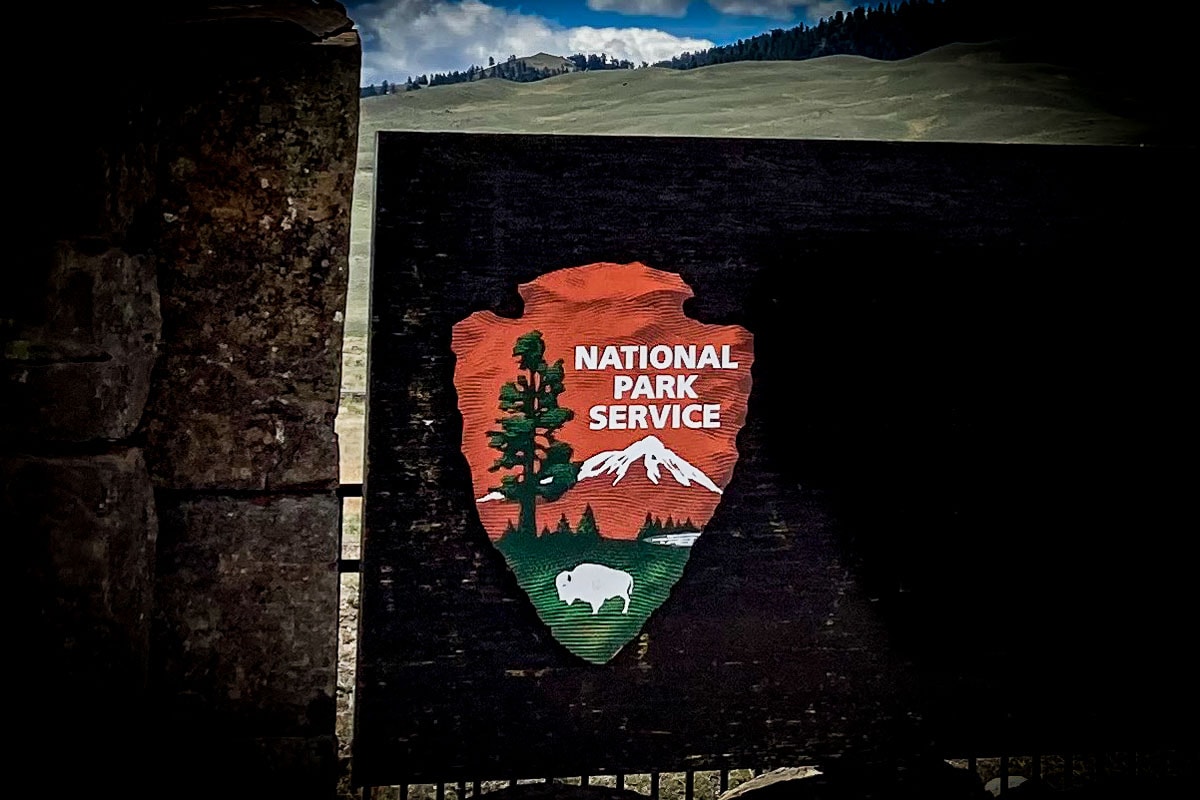There’s no denying that the U.S. national parks are one of the country’s greatest assets. Nature, landscapes, wildlife, and historical sites attract millions upon millions of people to the national parks each year, both Americans and foreign visitors alike.
Nowadays, the entire National Park System encompasses more than 420 individual units or “parks,” divided into no fewer than 19 different designations.
The national parks protect several of the world’s grandest natural wonders. From the Grand Canyon, the Everglades, and Great Smoky Mountains to the Yellowstone Caldera and Yosemite Valley, these parks are renowned around the globe for their spectacular scenery and features.
On the other hand, less-known parks like North Cascades, Lassen Volcanic, Great Basin, and Guadalupe Mountains are also home to incredible natural beauty, yet remain (somewhat) under the radar.
This is just to say there’s much more to America’s national parks than the “crown jewels” of the system.
As popular as the national parks are nowadays, there’s a lot more to learn about them. So, let’s check out a bunch of fun facts about the national parks below!
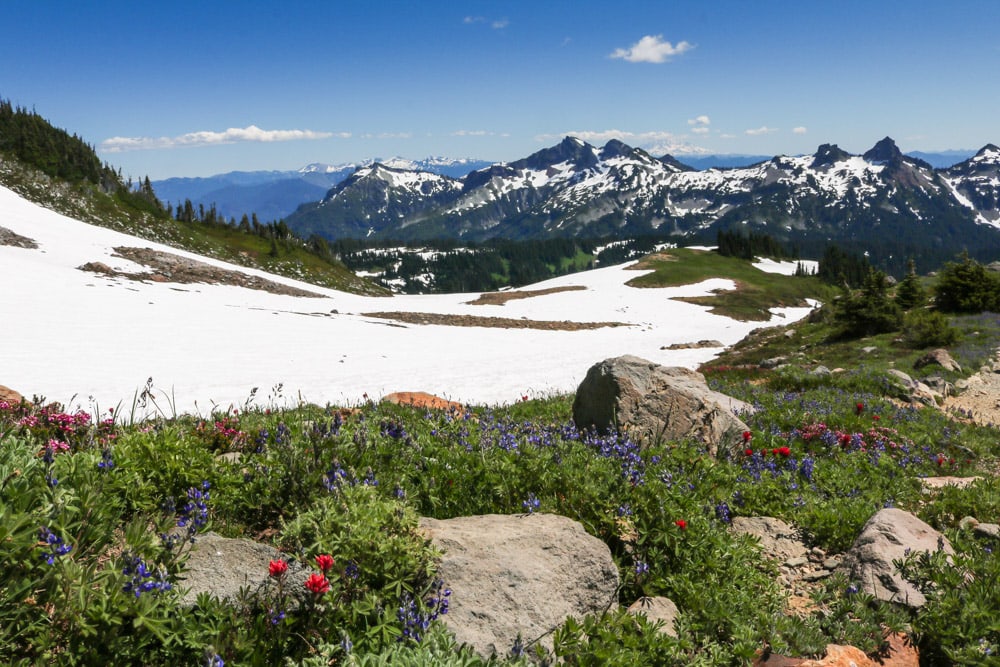
This blog post about fun facts about national parks in the United States contains affiliate links. You can read more about our Terms of Use / Disclosure here.
55 Fun Facts About the National Parks of America
Even if you’re a diehard national park fan, I’m pretty sure some of the following fun facts about the national parks will still surprise you. (I’m absolutely obsessed with the national parks, write about them every day, and I learned several new facts during my research for this post.)
For instance, did you know that the longest cave in the world is in a U.S. national park? Or that some national parks no longer exist? That there are two American national parks north of the Arctic Circle and one south of the equator?
If these fun national park facts sparked your interest, you’re going to want to continue reading. There are literally more than 50 other fun facts about national parks waiting to be discovered below.
1. The first national park in the United States was Yellowstone, established in 1872.
President Ulysses S. Grant designated Yellowstone National Park on March 1, 1872.
It was the very first national park in the United States and in the world, solidifying the “national park idea” and kickstarting a movement that would create more than a thousand national parks around the globe.
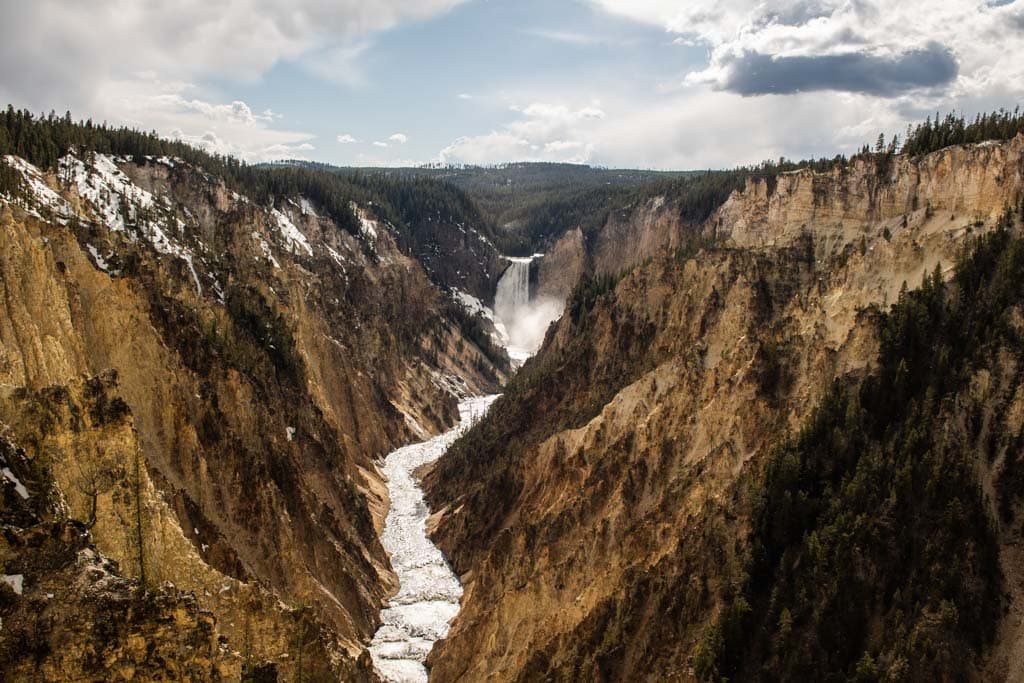
2. There are currently 63 national parks in the United States.
After the designation of Yellowstone National Park, four more national parks were established in the 1800s—Sequoia, Kings Canyon, Yosemite, and Mount Rainier.
More than 50 parks were added to the system throughout the 20th century, while the 2000s saw several redesignations from national monuments to national parks. Currently, there are 63 national parks in the United States.
3. The most visited national park in the United States is Great Smoky Mountains National Park, with over 12 million visitors annually.
Located in Tennessee and North Carolina, Great Smoky Mountains National Park has been the most visited national park for years.
In 2022, almost 13 million people visited the park (12,937,633). This is more than 2.5 times as many as the second most-visited park, Grand Canyon (4,732,101).
4. Great Sand Dunes National Park in Colorado has the tallest sand dunes in North America, with the tallest reaching almost 750 feet.
Set at the base of the Sangre de Cristo Mountains in southern Colorado, the Great Sand Dunes are a sprawling dunefield that features the highest sand dunes on the North American continent.
The tallest sand dune in North America is Star Dune, which currently measures 741 feet from base to summit. The exact height varies depending on weather conditions.
You can hike to the top from the Dunes Parking Lot, across the Medano Creek bed, and along its ridge.
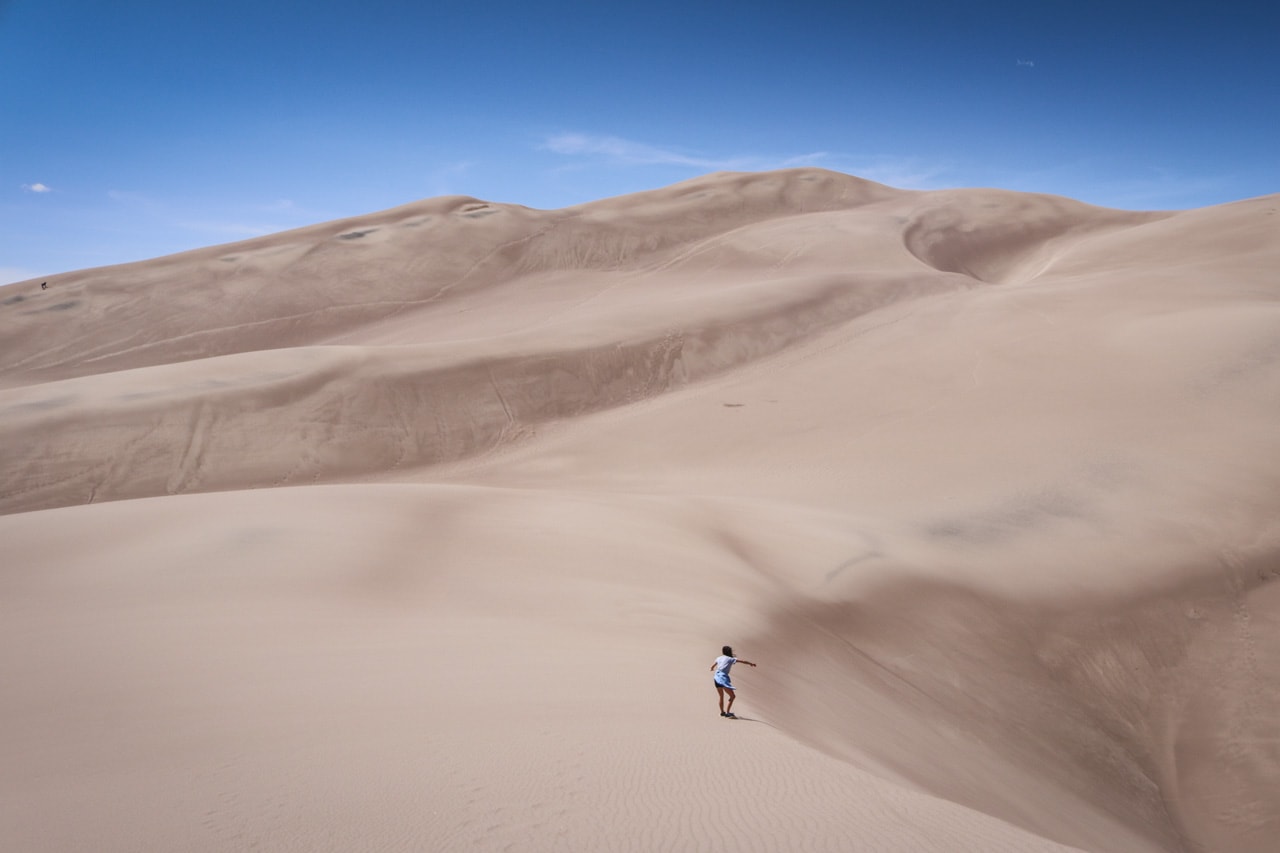
5. The largest national park in the United States is Wrangell-St. Elias National Park and Preserve in Alaska, which covers over 13 million acres.
The largest national park in America is the relatively unknown Wrangell-St. Elias National Park and Preserve, a positively massive park in southeastern Alaska.
Encompassing 13.2 million acres (20,625 square miles), this enormous park and preserve is bigger than Denali, Death Valley, Yellowstone, Grand Canyon, Glacier, Yosemite and Great Smoky Mountains combined.
6. The deepest lake in the United States is Crater Lake, located in Crater Lake National Park in Oregon.
With an average depth of 1,949 feet—it may fluctuate by a few feet—Oregon’s Crater Lake is the deepest lake in the United States and among the top ten deepest lakes in the world.
Because the lake relies on precipitation and snowmelt as its water source, it’s also one of the bluest, cleanest, and clearest lakes on Earth.
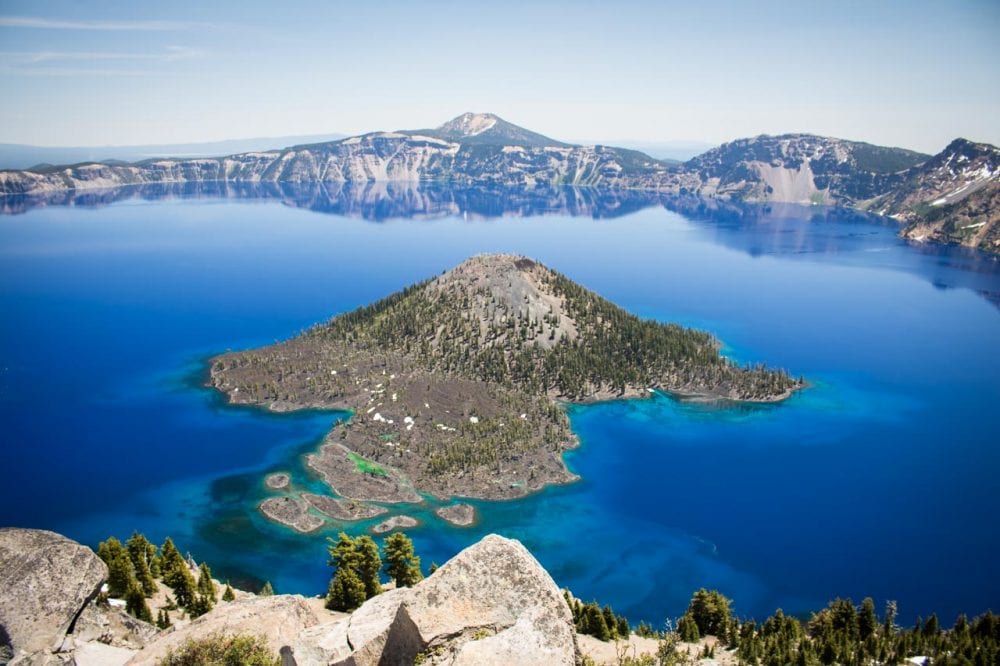
7. The highest mountain in the United States (and North America) is Denali, the centerpiece and namesake of Denali National Park in Alaska.
Also known as Mount McKinley, Denali is the highest mountain in North America. Its summit is 20,310 feet above sea level.
Additionally, Denali is also one of the most prominent mountains on the planet. From base to summit, the mountain measures 18,000 feet, the tallest vertical rise of any mountain in the world.
8. The tallest waterfall in the United States is Yosemite Falls, located in Yosemite National Park in California.
Rising 2,425 feet above the Yosemite Valley, the three-tiered Yosemite Falls is America’s tallest waterfall.
It’s at its most impressive from November to July with peak flow typically occurring in May. You can hike to the top of Yosemite Falls on a strenuous full-day hike from the valley floor.
9. The largest tree in the world is the General Sherman tree, located in Sequoia National Park in California.
Measured by volume, the General Sherman tree, a giant sequoia (Sequoiadendron giganteum), is the largest living tree on the planet. The diameter at its base measures 36 feet, while the top of the tree is no fewer than 275 feet above the ground.
General Sherman is in the Giant Forest of Sequoia National Park and is accessible via a couple of easy paved trails.
10. The Waterton-Glacier International Peace Park is the world’s first international peace park.
In 1932, Canada and the United States jointly established the Waterton-Glacier International Peace Park “to commemorate the peace and goodwill the two nations continue to share.” It was the first designation of its kind in the world.
The international peace park comprises Canada’s Waterton Lakes National Park and the adjacent Glacier National Park in Montana. Together, the two parks are also known as “the Crown of the Continent.”
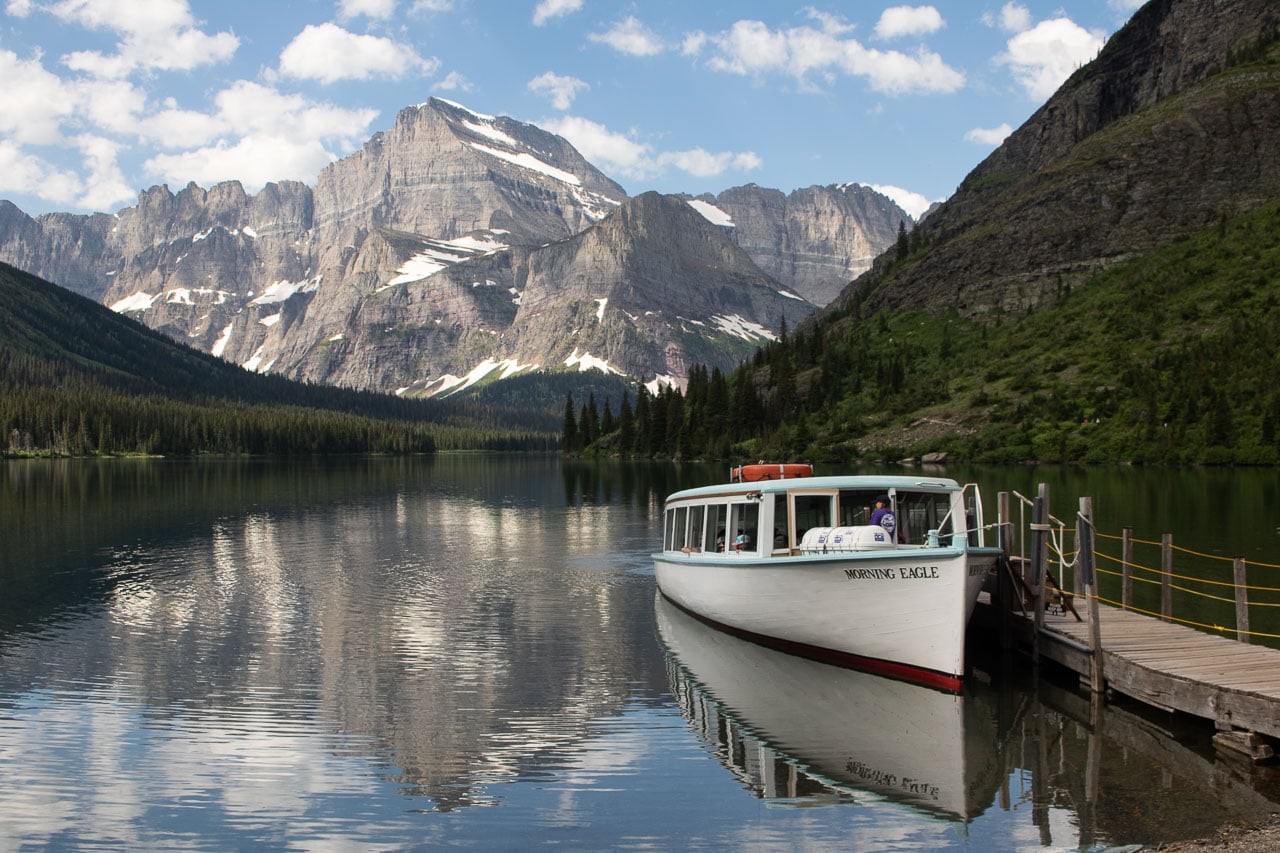
11. The smallest national park in the United States is Gateway Arch National Park in Missouri, which covers just over 90 acres.
By far the smallest national park in the United States is Gateway Arch National Park in St. Louis, Missouri.
Formerly known as the Jefferson National Expansion Memorial, this iconic park and arch is no bigger than 91 acres (0.14 square miles). It’s essentially a small urban park, albeit one of huge historical significance.
You can see a list of all national parks ranked by size here.
12. Great Basin National Park in Nevada is home to the oldest trees in the world, estimated to be over 4,800 years old.
You can see several of the oldest living trees in the world in Nevada’s Great Basin National Park. High up in the mountains, the Great Basin bristlecone pine (Pinus longaeva) grows “in isolated groves just below the tree-line,” the National Park Service says.
These remarkable trees have exceptionally dense wood and strong roots and can get literally thousands of years old. “They grow where most other vegetation cannot, limiting the impact that a forest fire might havoc on their near-eternity.”
The remains of the Prometheus tree, once the world’s oldest tree at 4,700-5,000 years old, are still present in Great Basin National Park, along with numerous thousands-year-old living bristlecone pines.
13. Yellowstone National Park is home to over 10,000 hydrothermal features, including geysers, hot springs, and mud pots.
Yellowstone National Park is home to the greatest concentration of hydrothermal features on Earth. There are more than 10,000 of them, including colorful hot springs, travertine terraces, mud pots, fumaroles, and over 500 geysers.
Just to illustrate how extraordinary this is: there are more geysers in Yellowstone than all other geysers in the world combined.
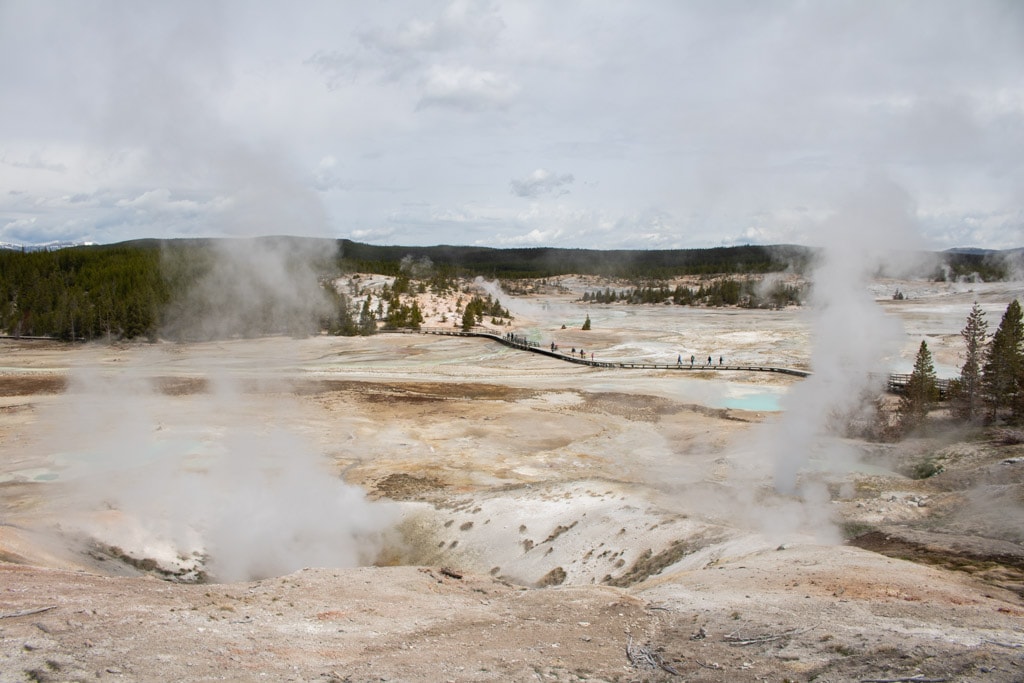
14. There are a handful of national parks that no longer exist.
One of my favorite fun facts about national parks is that there are a number of them that actually no longer exist.
Some parks have been abolished completely, while others are renamed, incorporated into other parks, or even split up into separate national parks.
- Mackinac National Park, Michigan (established in 1875, now Mackinac Island State Park)
- General Grant National Park, California (established in 1890, now part of Kings Canyon National Park)
- Sullys Hill National Park, North Dakota (established in 1904, now White Horse Hill National Game Preserve)
- Platt National Park, Oklahoma (established in 1906, now part of Chickasaw National Recreation Area)
- Hawaii National Park, Hawaii (established in 1916, now split up into Haleakalā National Park in Maui and Hawaiʻi Volcanoes National Park on the Big Island)
15. The largest cave system in the world is in Mammoth Cave National Park in Kentucky, with over 425 miles of explored underground passages.
Underneath the forests and hills of central Kentucky lies a vast subterranean world of passageways, halls, and streams.
Mammoth Cave is a sprawling cave system with more than 425 miles of surveyed passageways, making it the longest known cave on Earth. Scientists expect that there are hundreds of miles more waiting to be explored.
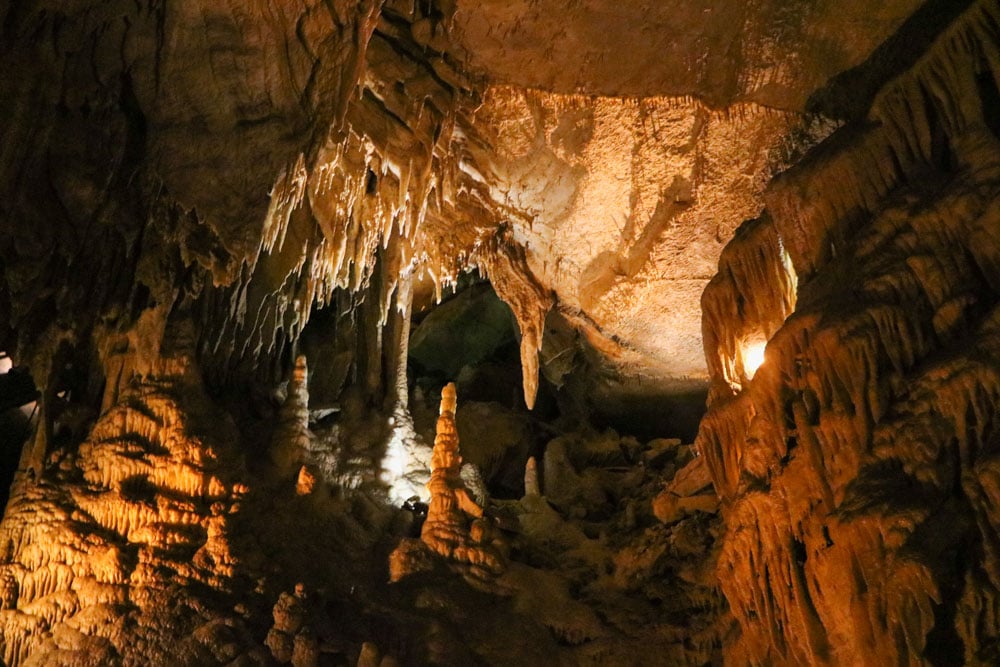
16. For several months each year, Cadillac Mountain in Maine’s Acadia National Park is the location of the first sunrise in the United States.
The highest mountain on the Eastern Seaboard, Cadillac Mountain is a top attraction in Maine’s Acadia National Park. It’s particularly famous for its sunrise viewing opportunities.
From October 7 to March 6, the summit of Cadillac Mountain is the first place in the United States where you can see the sun rise above the horizon, one of the greatest national park experiences in the country.
You can learn more about visiting Cadillac Mountain here, including possible reservation requirements.
17. Everglades National Park in Florida is the only place in the world where alligators and crocodiles coexist.
Lovers of wildlife will want to visit Everglades National Park at some point. In addition to an incredible abundance of birds, the Everglades is also the only place in the world where you can see both alligators and crocodiles in the wild.
Sometimes, you can even see these animals literally lounging side-by-side on a shoreline. You can find lots more information about alligators and crocodiles in the Everglades here.
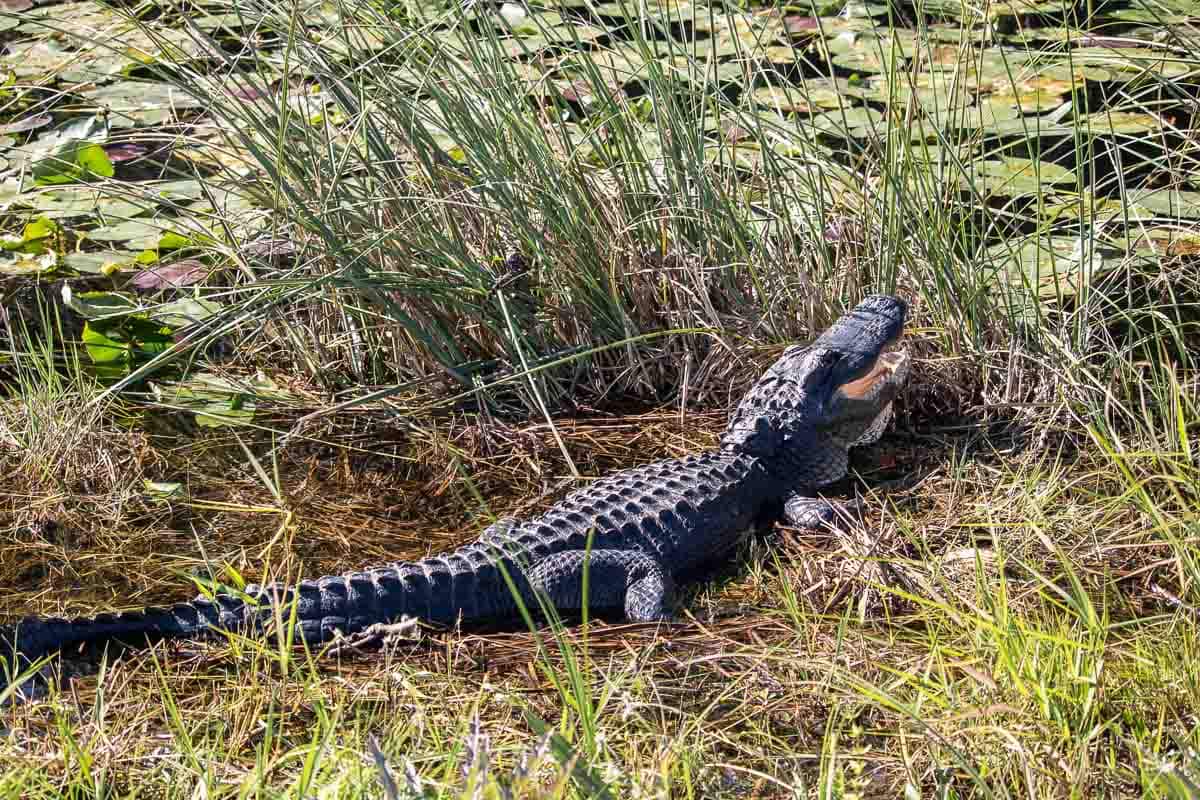
18. Great Smoky Mountains National Park is one of the most biodiverse areas in the world, with over 19,000 documented species.
Preserving a large portion of one of the world’s oldest mountain ranges, Great Smoky Mountains National Park is also one of the most biodiverse places on Earth. No fewer than 19,000 species of plants and animals have been documented in the park.
Moreover, scientists “think that as many as 100,000 other species may have yet to be identified,” according to the U.S. Geological Survey.
Great Smoky Mountains National Park is the single most biodiverse unit in the entire National Park System, too. For example, there are approximately 100 species of native trees in the park, more than in any other national park in North America.
Additionally, the Great Smokies are also home to 1,500 flowering plants, 200 species of birds, 68 mammals, and more than 80 reptiles and amphibians. It’s especially known for its diversity of salamanders.
19. What is now known as Hot Springs National Park was the first tract of land that was federally protected in the United States.
After the Louisiana Purchase in 1803, the area that is now Hot Springs National Park in Arkansas became United States territory.
Expeditions were organized and settlers arrived just a few years later, attracted by the supposedly healing benefits of the “Hot Water of the Washita” and its economic potential.
Developers wasted no time building cabins, stores, and other facilities. As early as 1820, the Arkansas Territorial Legislature requested the federal government to protect the hot springs and surrounding mountains as a federal reservation.
President Andrew Jackson eventually did sign the Hot Springs Reservation into law on April 20, 1832. This made Hot Springs the first federally protected park in the United States, predating Yellowstone National Park by almost 40 years.
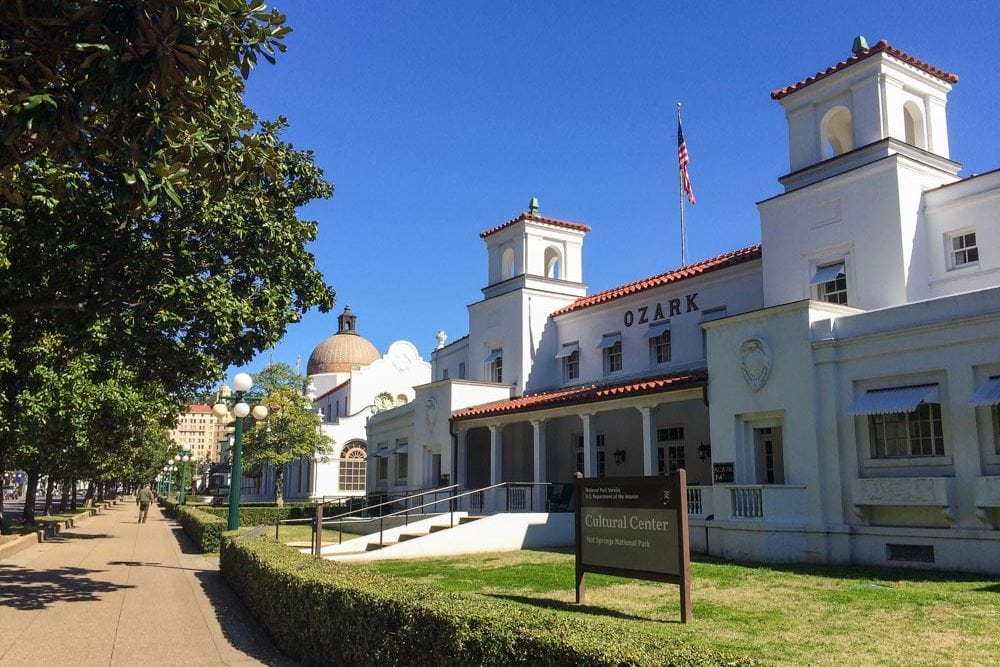
20. Death Valley National Park in California has the hottest air temperature ever recorded in the world, at 134 degrees Fahrenheit.
A long and narrow basin flanked by towering mountains in southern California, Death Valley is famous for being the hottest place on Earth and the driest place in North America.
Preserved in the eponymous Death Valley National Park, Death Valley holds the world record for highest air temperature ever recorded at 134°F (57°C). This temperature was recorded on July 10, 1913, at Furnace Creek.
21. Death Valley National Park is also home to the lowest point in North America.
Besides being exceptionally hot and dry, Death Valley also holds another record. Badwater Basin, a huge area of salt flats in the heart of Death Valley National Park, is 282 feet below sea level, making it North America’s lowest point.
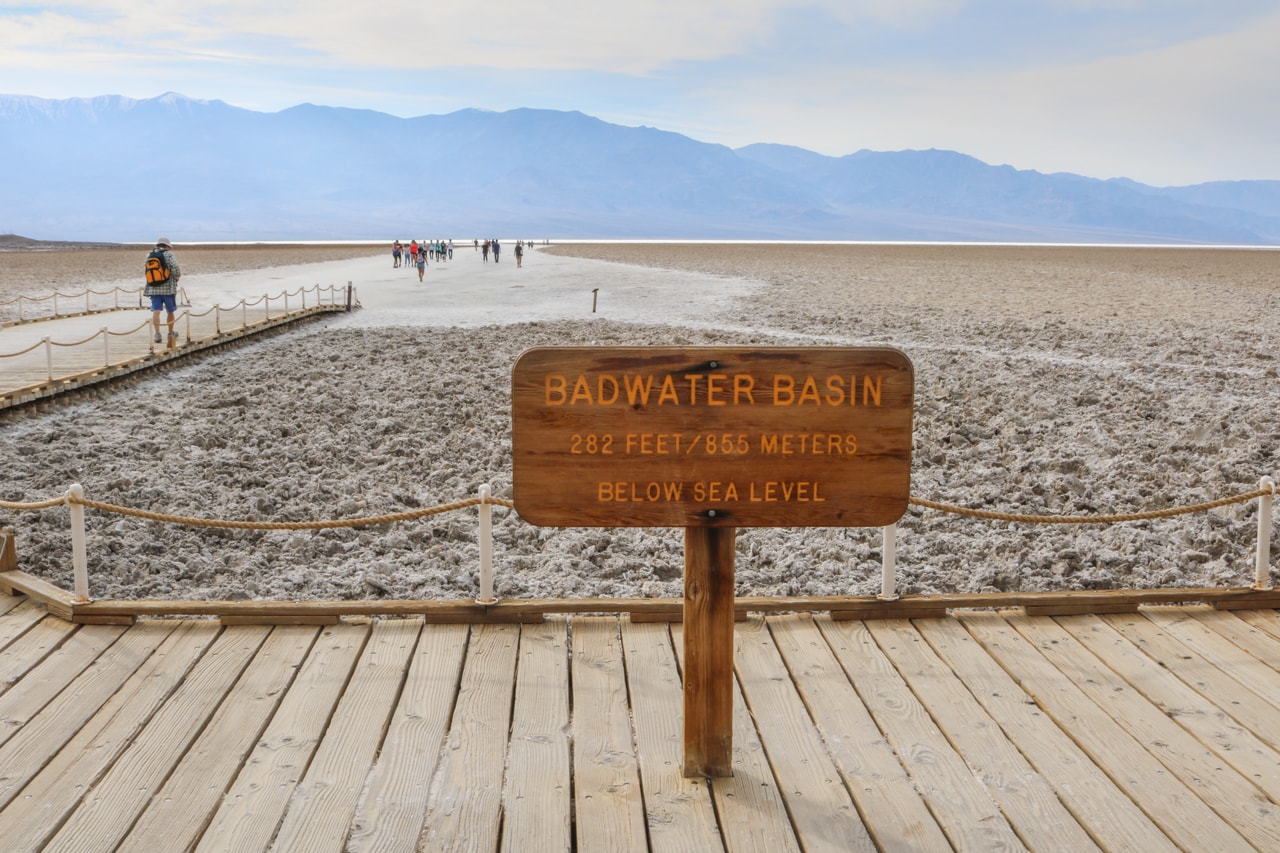
22. Rocky Mountain National Park in Colorado has more than 75 peaks that are over 12,000 feet in elevation.
One of the highest national parks in America, Rocky Mountain National Park comprises 77 mountain peaks that are more than 12,000 feet high. The highest of them all is Longs Peak with its summit at 14,259 feet above sea level.
The Continental Divide runs through the park in a north-south direction, too. Additionally, the Department of the Interior says that Rocky Mountain’s “Alpine Visitor Center also sits at the highest elevation of all National Park Service sites.”
23. Rocky Mountain National Park has the highest continuously paved road in the United States, Trail Ridge Road, which reaches an elevation of 12,183 feet.
Yet another altitude record in Rocky Mountain National Park, this is one of the coolest fun facts about national parks. It’s worth highlighting it separately from the park’s mountain peaks above.
Running for 48 miles between Estes Park in the east and Grand Lake in the west, Trail Ridge Road was called a “scenic wonder road of the world” upon its opening in 1932.
Reaching an elevation of 12,183 feet above sea level, it’s the highest continuously paved road in the United States. Eleven miles of the road are above tree-line, running across alpine tundra and providing truly spectacular panoramic views.
24. Acadia National Park in Maine was the first national park east of the Mississippi River.
Created as Sieur de Monts National Monument in 1916, later redesignated and renamed as Lafayette National Park in 1919, Acadia National Park got its current name in 1929.
It was “the first national park created from private lands gifted to the public through the efforts of conservation-minded citizens,” the National Park Service says.
Acadia was also the first national park east of the Mississippi River. Up until 1916, which incidentally is also the year the National Park Service was founded, all other national parks were in the West.
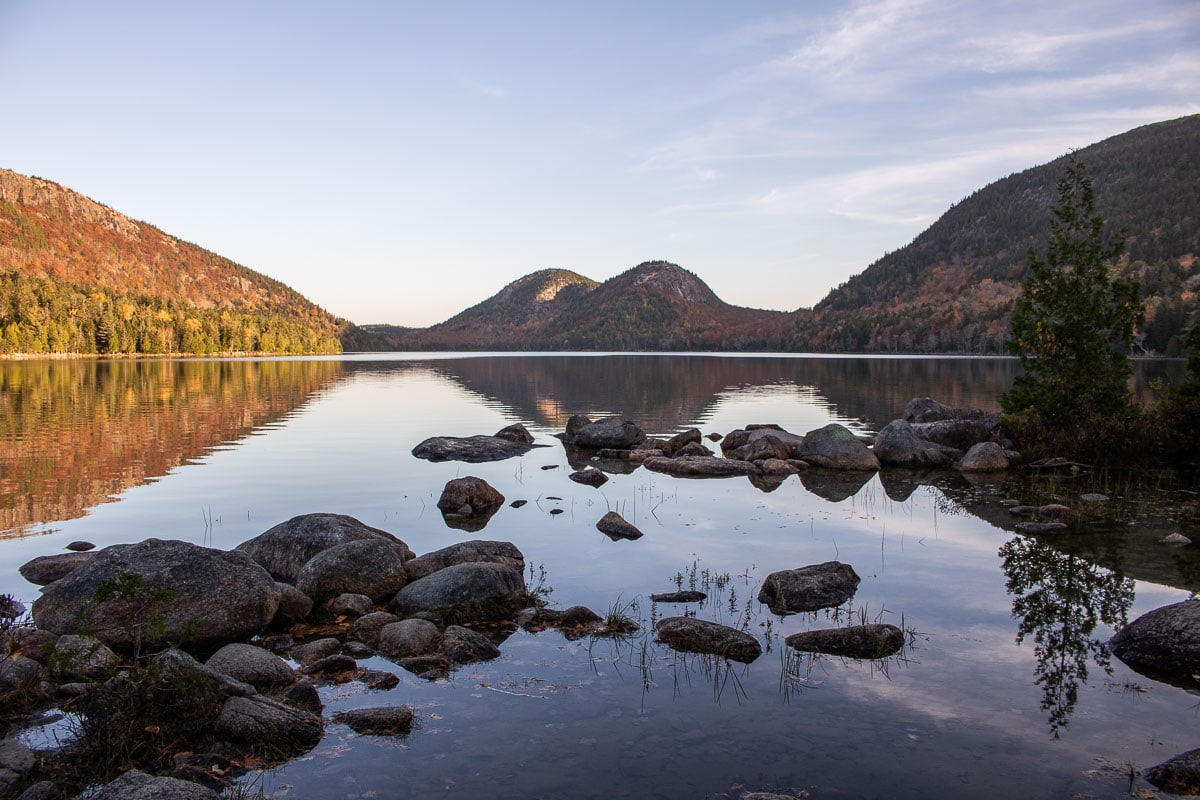
25. Katmai National Park in Alaska is considered to be the best place in the world to see brown bears.
Situated on the coast of southern Alaska, remote Katmai National Park is home to an estimated 2,200 brown bears. While this isn’t the densest concentration or highest number of brown bears, the park is regarded as the best place to see these animals in the world.
Every year in July and September, Brooks Camp becomes the world’s brown bear viewing hotspot. This is when the bears come to the Brooks River to feed on migrating salmon, one of the greatest wildlife spectacles on the planet.
From the viewing platform, visitors can often see dozens of brown bears fishing and feeding in the river.
26. Joshua Tree National Park in California is named after the unique Joshua tree, which is an indicator species of the Mojave Desert.
Despite its name indicating otherwise, the Joshua tree (Yucca brevifolia) isn’t a tree at all. It is a member of the Agave family and is categorized in a subgroup of flowering plants that also includes grasses and, believe it or not, orchids.
The Joshua tree is the namesake of California’s Joshua Tree National Park, which sits at the meeting point of the Mojave and Colorado deserts.
Joshua trees are an indicator species of the Mojave Desert. They almost exclusively live in that desert, which is higher and cooler than other deserts in the Southwest and California.
However, you might occasionally also see a Joshua tree in the Sonoran Desert or even in the San Bernardino Mountains.
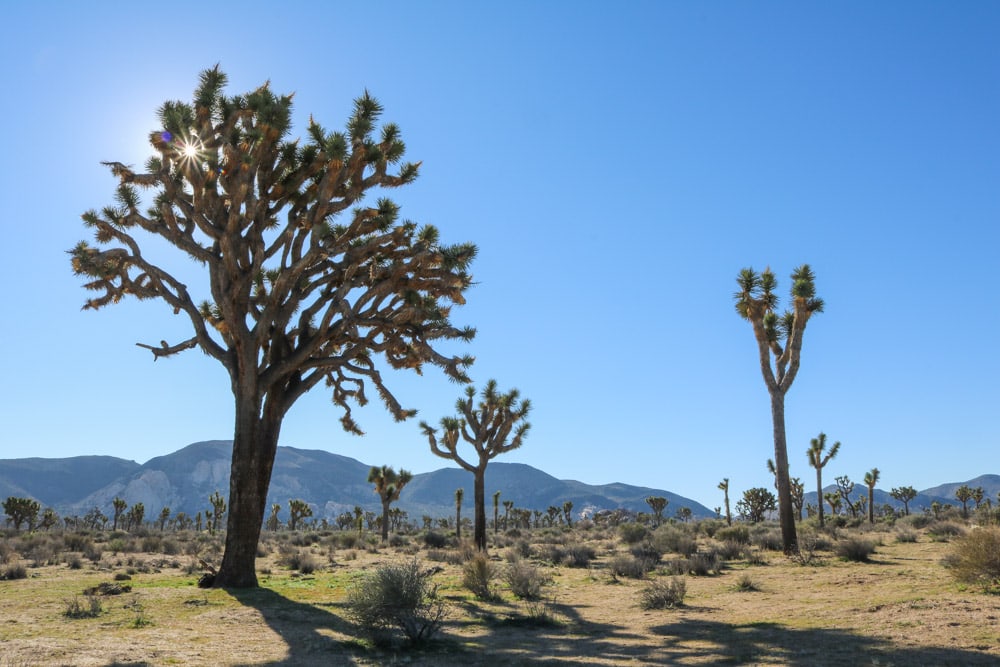
27. Channel Islands National Park off the coast of California is home to over 2,000 species of plants and animals.
Encompassing five of the eight Channel Islands, an archipelago off the coast of southern California, Channel Islands National Park is sometimes referred to as the “Galapagos of North America.”
Although relatively small, this island group is one of the most biodiverse areas on the continent. The Channel Islands are home to more than 2,000 species of plants and animals. No fewer than 145 of those are found nowhere else on the planet.
On a trip to Channel Islands National Park, you can see everything from endemic island foxes and scrub jays to brown pelicans, harbor seals, California sea lions, elephant seals, dolphins, gray whales, humpback whales, and even blue whales.
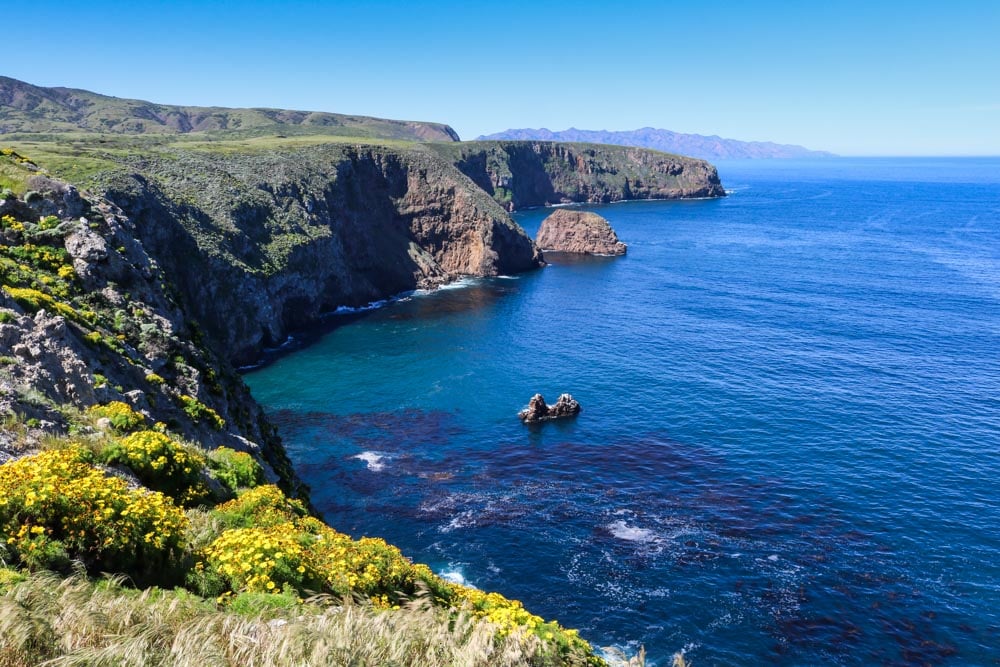
28. Arches National Park in Utah has more than 2,000 natural stone arches.
No other place in the world has such an exceptional concentration of natural stone arches as Utah’s Arches National Park. There are more than 2,000 arches in the park, in all shapes and sizes.
They vary from thin cracks in the rocks to massive arches hundreds of feet long. You can see many of the most beautiful arches in Arches National Park on the park’s hiking trails.
This includes the renowned Delicate Arch, spectacular Double Arch, and Landscape Arch, which is the longest natural rock arch in North America with a span of 306 feet.
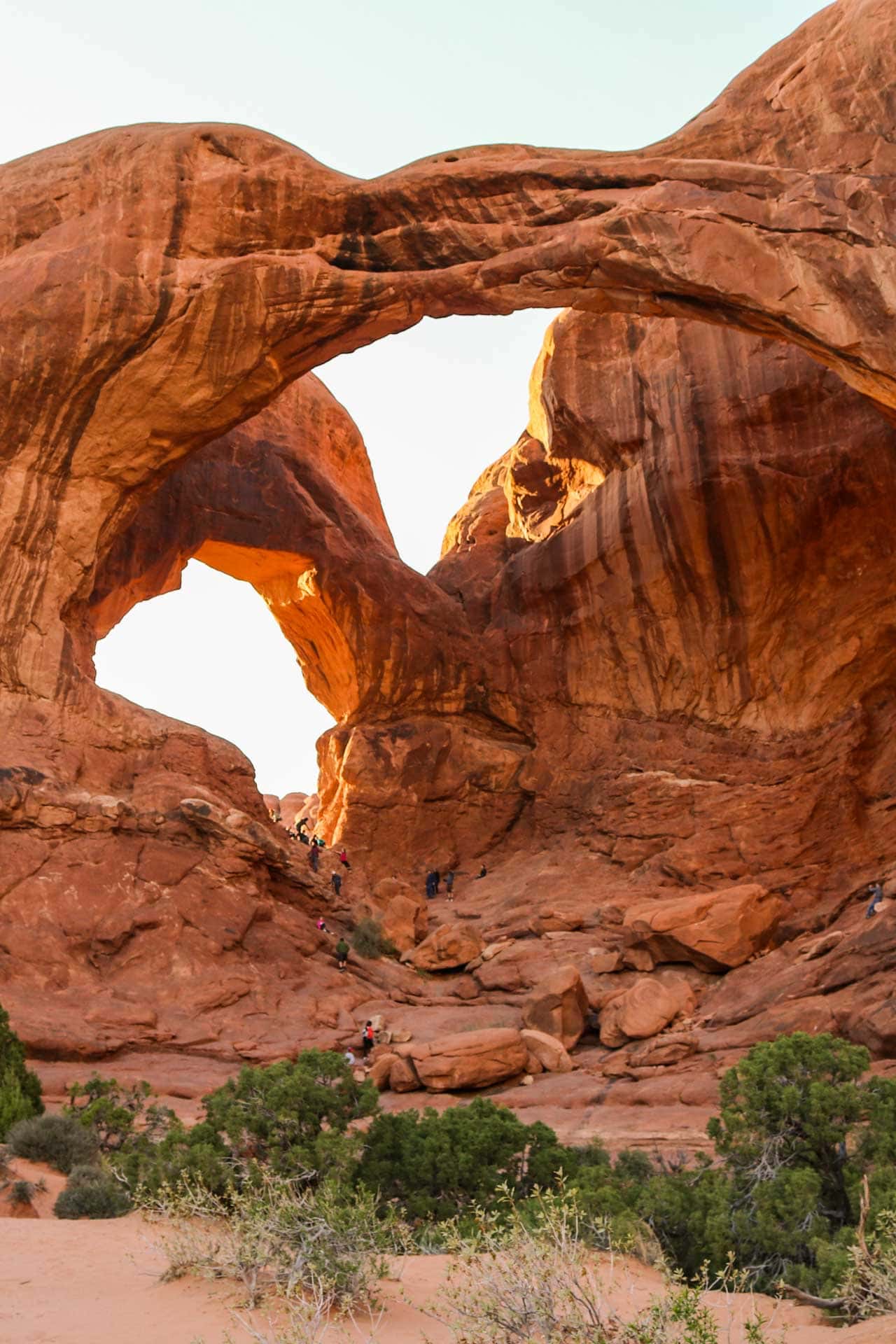
29. Carlsbad Caverns National Park in New Mexico has so many bats it has its own Bat Flight Program
New Mexico’s Carlsbad Caverns National Park is home to 17 different bat species, including hundreds of thousands of Brazilian free-tailed bats.
These bats live in Carlsbad Caverns from April through October, leaving the cave every night to go forage. Visitors can watch this incredible spectacle thanks to the park’s unique Bat Flight Program.
30. North Cascades National Park in Washington has highest concentration of glaciers in the contiguous United States.
Perhaps surprisingly, it’s not Glacier National Park that has the most glaciers in the lower 48 states, but North Cascades National Park in northern Washington.
The North Cascades National Park Service Complex, which consists of the national park itself, as well as two national recreation areas, boasts more than 300 glaciers and innumerable snowfields. (Glacier National Park is second with about two dozen active glaciers.)
As one of the snowiest places in the world, the North Cascades is “the most heavily glaciated area in the United States outside of Alaska,” the park says on its website.
31. Petrified Forest National Park in Arizona preserves one of the largest collections of petrified wood in the world.
As its name implies, Petrified Forest National Park in Arizona preserves a significant amount of petrified wood.
Millions of years ago, this area was a vast system of rivers lined with all kinds of trees. As the trees died, many floated down the waterways, eventually gathering at log jams. Thanks to ideal conditions, countless of these trees became petrified.
Nowadays, the so-called petrified “forests” in the park are the beautifully preserved remains of those log jams. Jasper Forest, Rainbow Forest, and Crystal Forest are excellent examples of this.
Petrified Forest National Park sits in the heart of an area that’s exceptionally rich in petrified wood deposits, one of the densest concentrations in the world.
Other places with rich petrified wood deposits include North Dakota, Egypt, and Argentina.
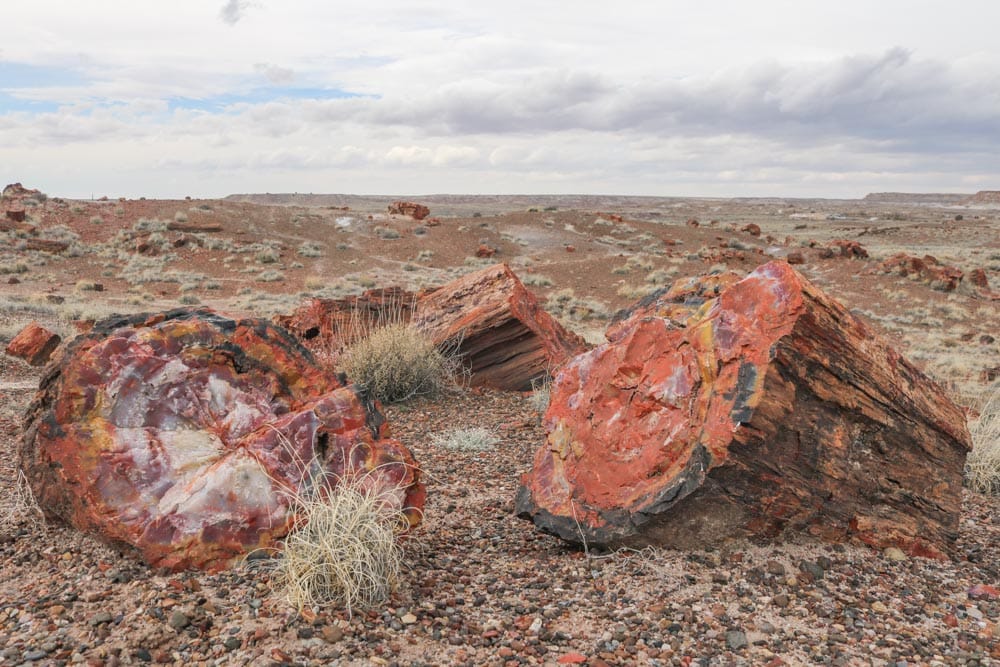
32. Sequoia and Kings Canyon National Parks in California have over 275 caves.
Jointly managed by the National Park Service, California’s Sequoia and Kings Canyon National Park comprise at least 275 known caves.
Although they’re known best for their enormous trees and mountain scenery, “by some accounts Sequoia and Kings Canyon National Parks could have been set aside solely to protect the amazing caves found in this area of the Southern Sierra Nevada,” according to the National Park Service.
The caves of Sequoia and Kings Canyon National Parks include the longest cave in California, countless karst streams, and some of America’s best alpine karst topography. They protect half of all California caves that are over a mile long.
33. Mesa Verde National Park in Colorado protects over 5,000 Ancestral Puebloan archaeological sites.
One of America’s largest archaeological preserves, Mesa Verde National Park in southwestern Colorado protects more than 5,000 archaeological sites built by the Ancestral Puebloans.
This includes an incredible 600 cliff dwellings, such as Cliff Palace, Balcony House, Square Tower House, Long House, and Spruce Tree House. A few of those can be visited on ranger-guided tours.
Additionally, there are even more fun facts about national parks associated with Mesa Verde. This park is both an International Dark Sky Park and a UNESCO World Heritage Site (that’s another national park fun fact below).
When it was created in 1906, Mesa Verde National Park was also the first national park established to protect cultural resources rather than natural features. It was the first national park to “preserve the works of man.”
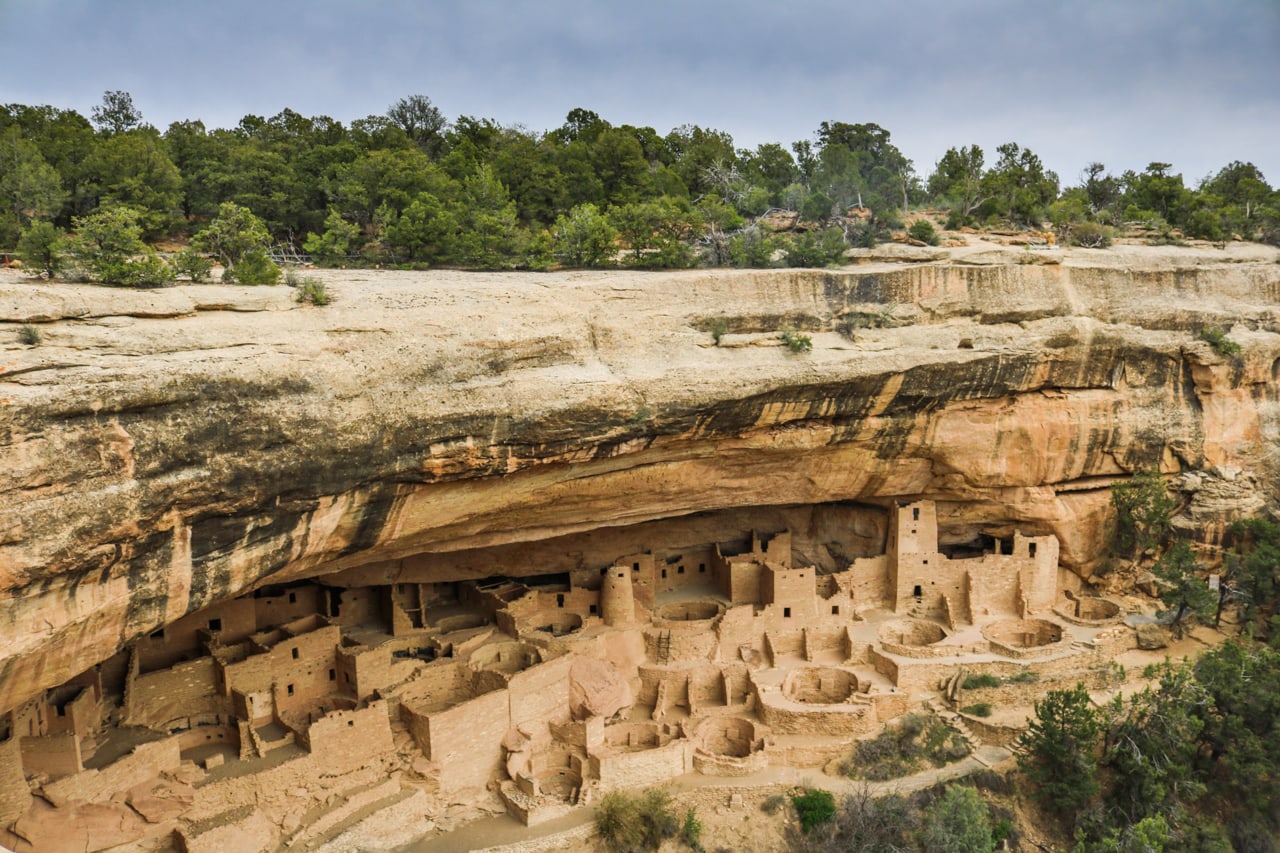
34. The Maritime Heritage Trail in Florida’s Biscayne National Park is the only underwater archaeological trail in the National Park System.
Biscayne National Park, located just outside of Miami, is 95% water and one of the largest marine preserves in the United States.
This extraordinary park has the unique distinction of having the only underwater archaeological trail in the National Park System, which is certainly one of the most interesting facts about the national parks.
The Maritime Heritage Trail is a scuba diving or snorkeling trail that links the remains of several shipwrecks, as well as lighthouse.
35. The Redwood National and State Parks in California are home to the tallest trees in the world, the coast redwoods.
While giant sequoias are generally bigger in terms of volume, it’s the coast redwoods (Sequoia sempervirens) that are the tallest trees in the world.
These gigantic trees can grow more than 300 feet high, which is higher than a typical 30-floor skyscraper. The best place to see and walk among these sylvan giants is the Redwood National and State Parks complex on the coast of northern California.
This is the location of a tree called Hyperion, the tallest living tree on Earth, which is more than 380 feet high. In order to protect it, however, its precise location is kept secret.
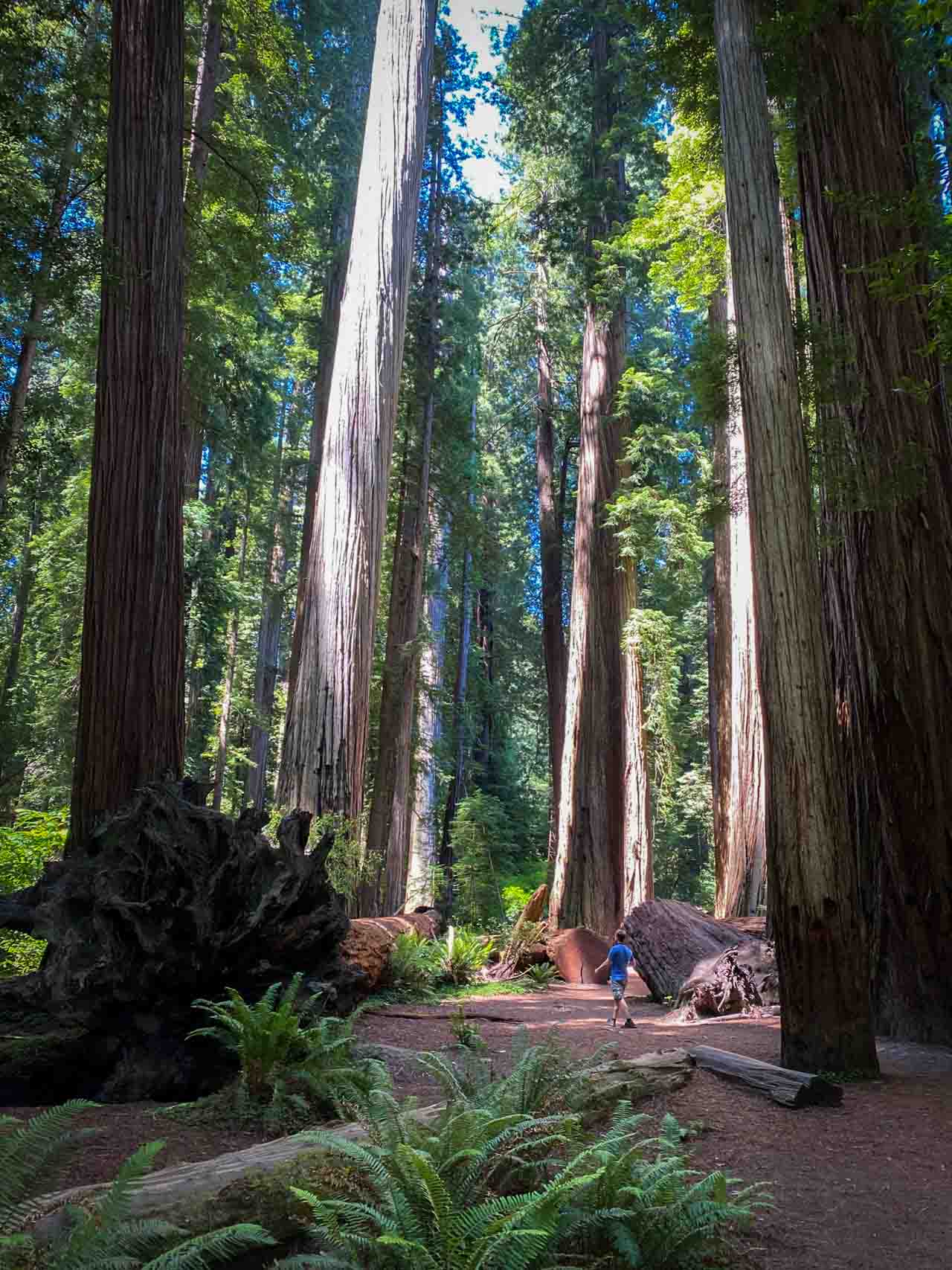
36. Isle Royale National Park in Michigan is the site of the world’s longest-running predator-prey study.
Located in the middle of Lake Superior—the nearest mainland location is in Canada—Isle Royale is a remote island home to a simple ecosystem. Its limited number of wildlife species makes it an ideal research location.
And indeed, scientists have conducted surveys of Isle Royale National Park’s wolves, moose, beavers, and plants since the mid-20th century.
The island’s predator-prey study—specifically the relationship between wolves and moose—has been going on non-stop since 1958. It is the longest study of its kind anywhere in the world, and one of the personal favorite fun facts about the national parks.
37. Dry Tortugas National Park in Florida preserves the Western Hemisphere’s largest brick building.
The crown jewel of Dry Tortugas National Park, an exceptionally remote park at the end of the Florida Keys, is Fort Jefferson.
This magnificent and massive sea fort is the largest masonry (brick) building in the Western Hemisphere and one of the biggest forts every built.
Besides being an imposing defensive structure, Fort Jefferson also served as a prison during the Civil War and a coaling station afterwards. It is now an iconic, although hard-to-get-to, tourist attraction in Florida.
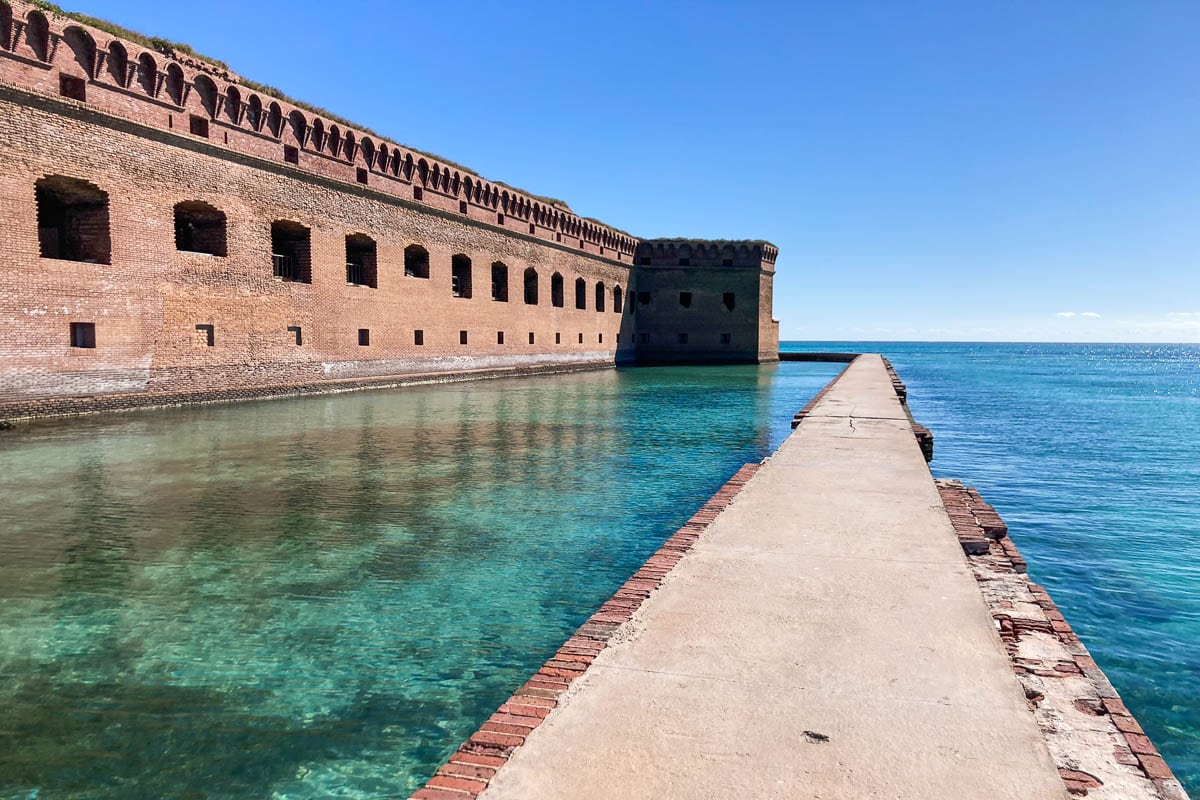
38. Two U.S. national parks are situated north of the Arctic Circle.
Both Kobuk Valley National Park and Gates of the Arctic National Park are situated north of the Arctic Circle in Alaska.
39. Two U.S. national parks aren’t located in one of the 50 states.
Not every state has a national park and, moreover, not every national park is even in a state. In fact, there are two American national parks in a U.S. territory:
- National Park of American Samoa (American Samoa)
- Virgin Islands National Park (U.S. Virgin Islands)
40. The National Park of American Samoa is the only American national park south of the equator.
That’s right, the United States (and its territories) are so big they encompass land in both the Northern and Southern Hemisphere.
The National Park of American Samoa, one of the least-visited units in the National Park System, is the only national park south of the equator.
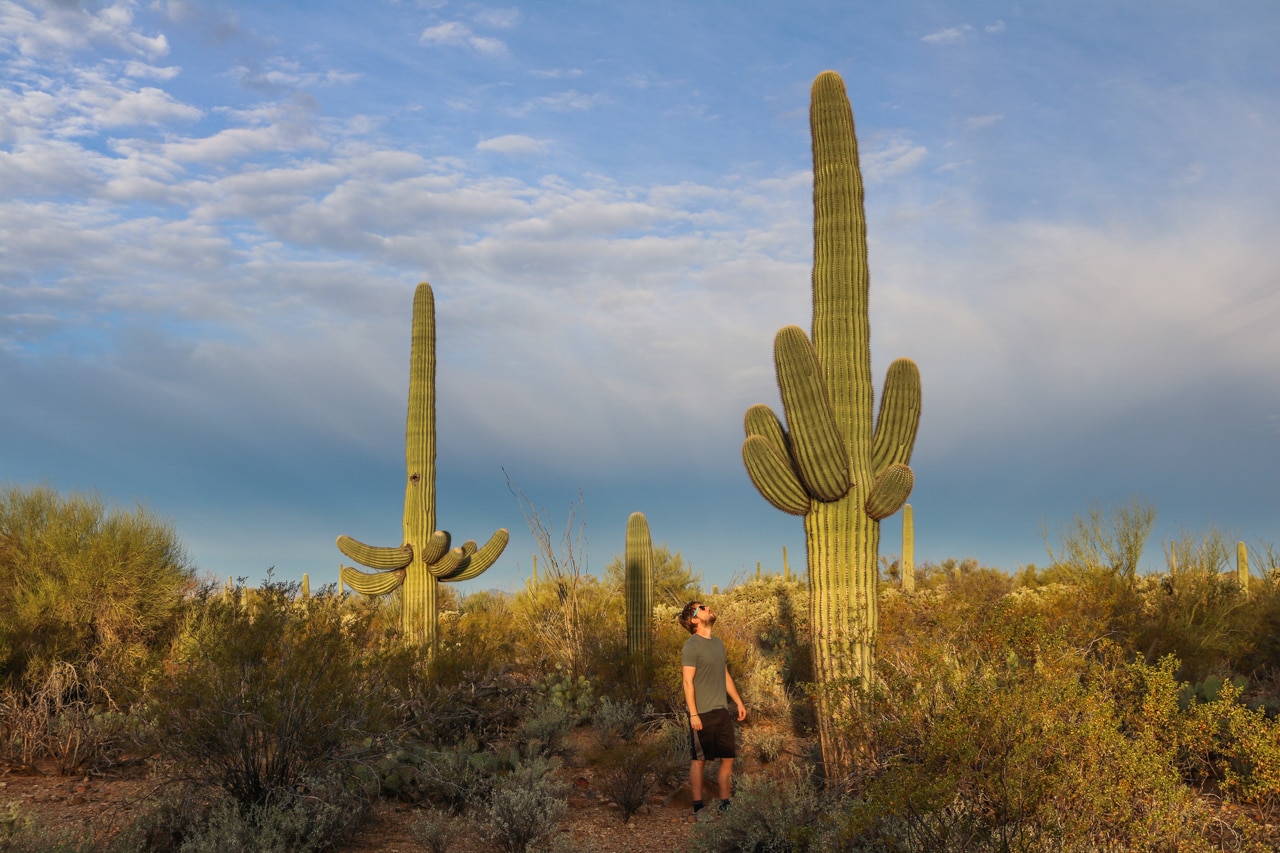
41. Saguaro National Park in Arizona is home to the largest cactus in the United States, the saguaro cactus.
Set aside specifically to protect a single species of plant, Saguaro National Park in southern Arizona is home to sprawling forests of saguaro cacti (Carnegiea gigantea) on both the east and west side of Tucson.
These huge cacti are an iconic symbol of the American West and can grow as tall as 50 feet. Native to the Sonoran Desert, they’re the largest species of cactus in the United States and can get up to 175 years old.
42. The temperate rain forests of Olympic National Park in Washington are the wettest places in the contiguous United States.
Moisture-heavy clouds bump into the west side of the Olympic Mountains in the heart of Olympic National Park, dumping their water in the form of rainfall into the park’s verdant forests.
The western slopes of Mount Olympus, for example, receive approximately 200 inches of precipitation per year, making this the wettest area in the lower 48 states.
This abundance of precipitation results in a lush temperate rain forest ecosystem home to tall moss-covered trees, waterfalls, and dense vegetation like ferns.
You can experience this remarkable scenery in places like the Hoh Rain Forest and Quinault Rain Forest.
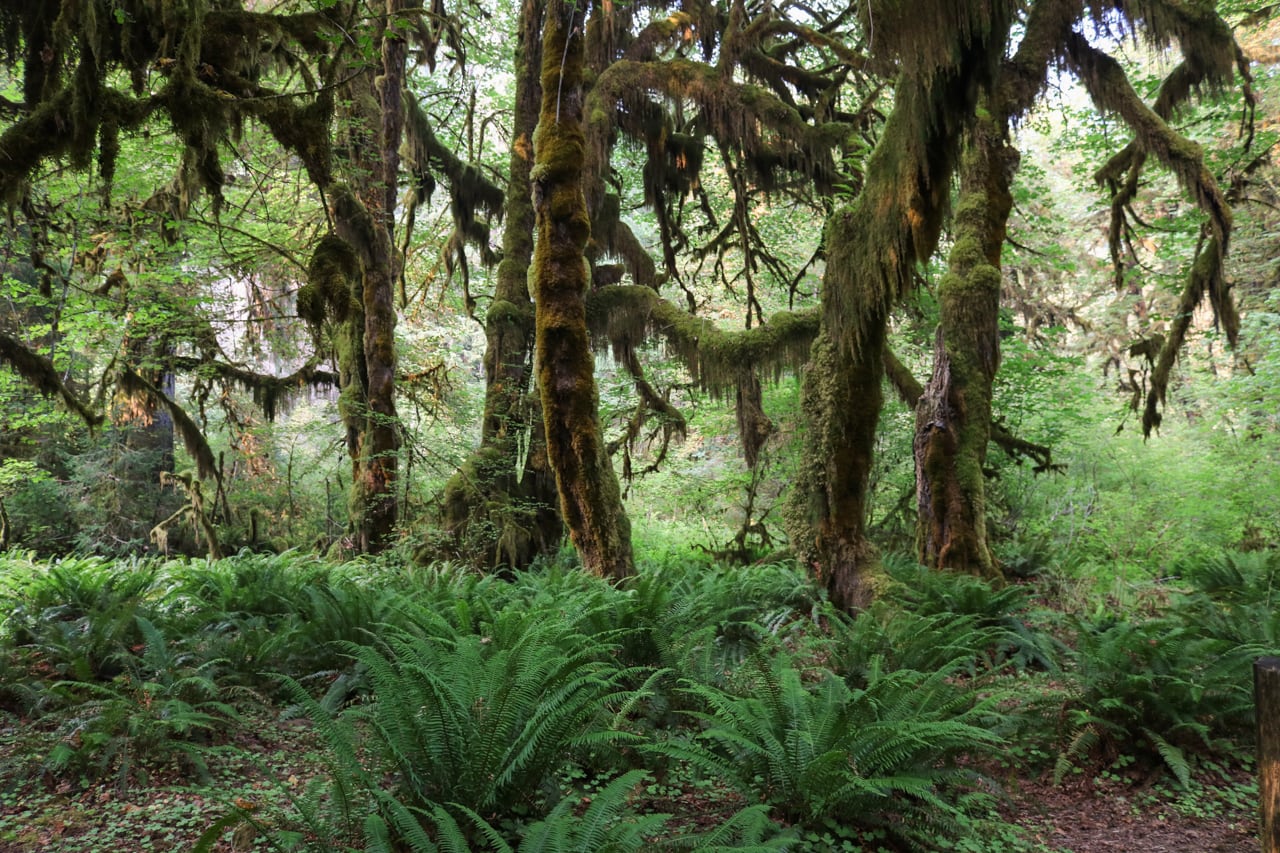
43. Hawaiʻi Volcanoes National Park is home to two of the most active volcanoes on Earth, Kīlauea and Mauna Loa.
Comprising most of the southern half of the Big Island of Hawaii, Hawaiʻi Volcanoes National Park is a very volcanically active place. In fact, this is where you’ll find the summits of two of the world’s most active volcanoes, Kīlauea and Mauna Loa.
Kīlauea is at the heart of the park’s tourist area, its caldera lined with scenic drives, trails, and overlooks. It is one of the most frequently erupting volcanoes in the world.
Mauna Loa towers above, an absolutely enormous mountain—its name means “long mountain” in Hawaiian—that is characterized by broad and gentle slopes.
Another of the many fun facts about the national park you might want to remember is that Mauna Loa, when measured from its base on the seafloor to its summit, is more than 30,000 feet high. This makes it the biggest mountain on Earth, as well as the largest active volcano on the planet.
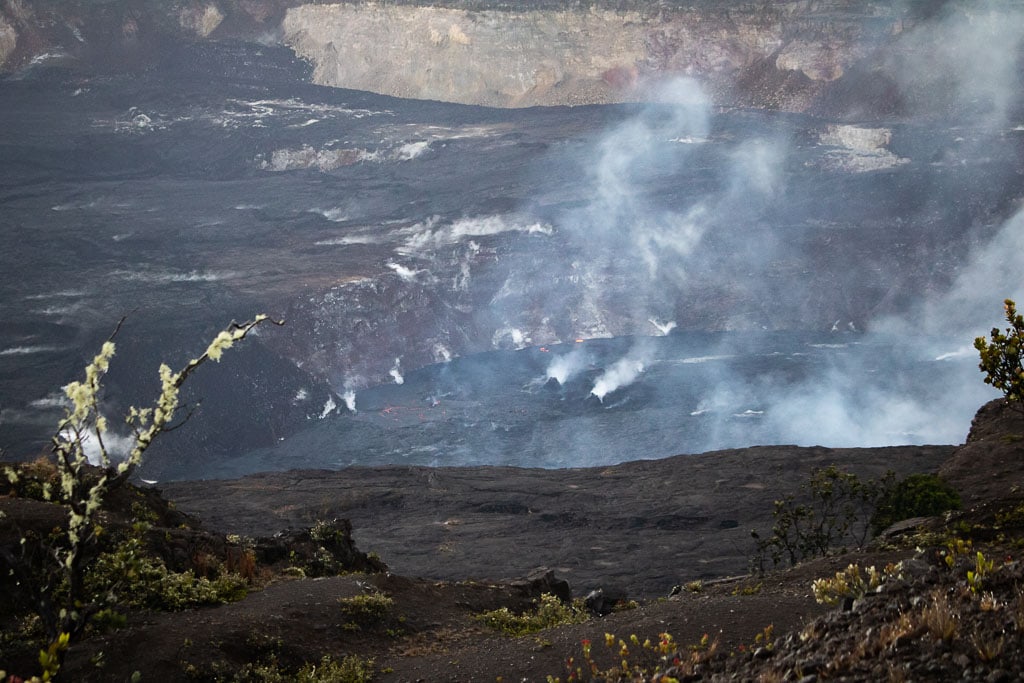
44. Everglades National Park is America’s largest subtropical wilderness.
Encompassing much of the tip of the Florida peninsula, Everglades National Park preserves the largest subtropical wilderness in the United States.
The park consists of 1.5 million acres of ponds, pine forests, hardwood hammocks, cypress swamps, and sawgrass marshes. It is one of the largest wetland areas in the world.
45. Yellowstone National Park is the only place in the United States where American bison have lived continuously since prehistoric times.
The bison herds of Yellowstone National Park are unique in several ways. For one, they’ve lived in this region continuously forever. It’s the only place in the United States where bison never went extinct.
As such, this is also the most genetically pure population of American bison (Bison bison). The animals still behave as they have since prehistoric times, congregation during the breeding season and migrating in search of food.
Additionally, the Yellowstone bison comprise America’s largest bison herds on public lands. Seeing these animals in the wild, in the very place they’ve always called home, is one of the quintessential national park experiences.
You can find the best places to see bison in Yellowstone here.
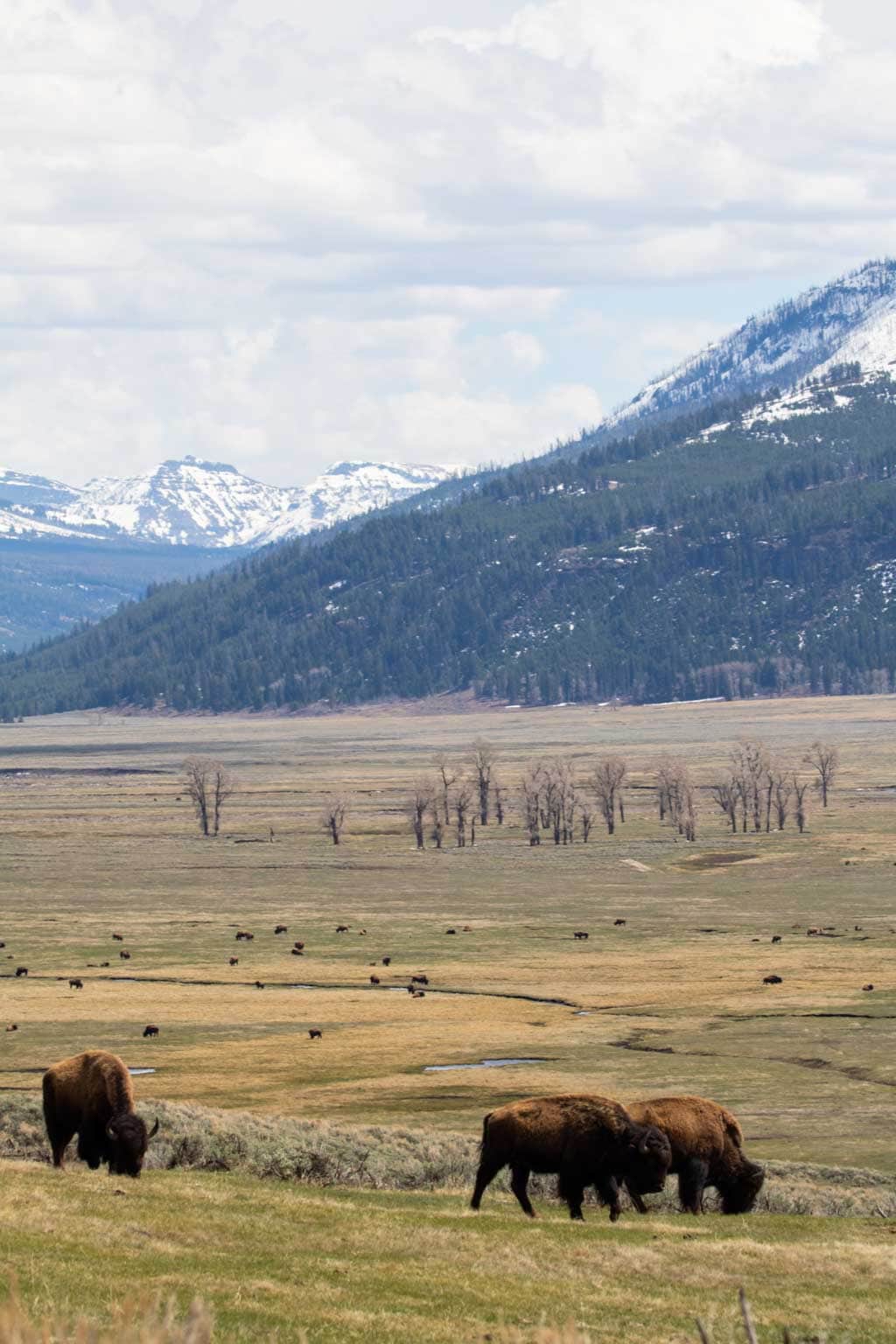
46. Wind Cave National Park in South Dakota was the first cave in the world to be protected as a national park.
Established on January 9, 1903, by President Theodore Roosevelt, Wind Cave National Park was the eighth national park in the United States and the first to protect a cave.
The park also preserves aboveground landscapes, mainly mixed-grass prairie and forests, that are home to iconic Great Plains wildlife, such as bison, pronghorn, prairie dogs, and rattlesnakes.
47. The peaks of the Teton Range in Grand Teton National Park were named after “breasts”, according to one popular theory.
There are a few different theories as to how the Teton Mountains in Grand Teton National Park got their names. Arguably the most popular and widespread one goes as follows, according to the National Park Service.
“The Tetons received their name from French-Canadian trappers who accompanied the earliest British expeditions into this territory. As they approached the range from the west, they beheld three towering mountains upon which they bestowed the name of ‘Trois Tetons’ (‘Three Breasts’).”
See this blog post to learn the names of all major peaks in the Teton Range.
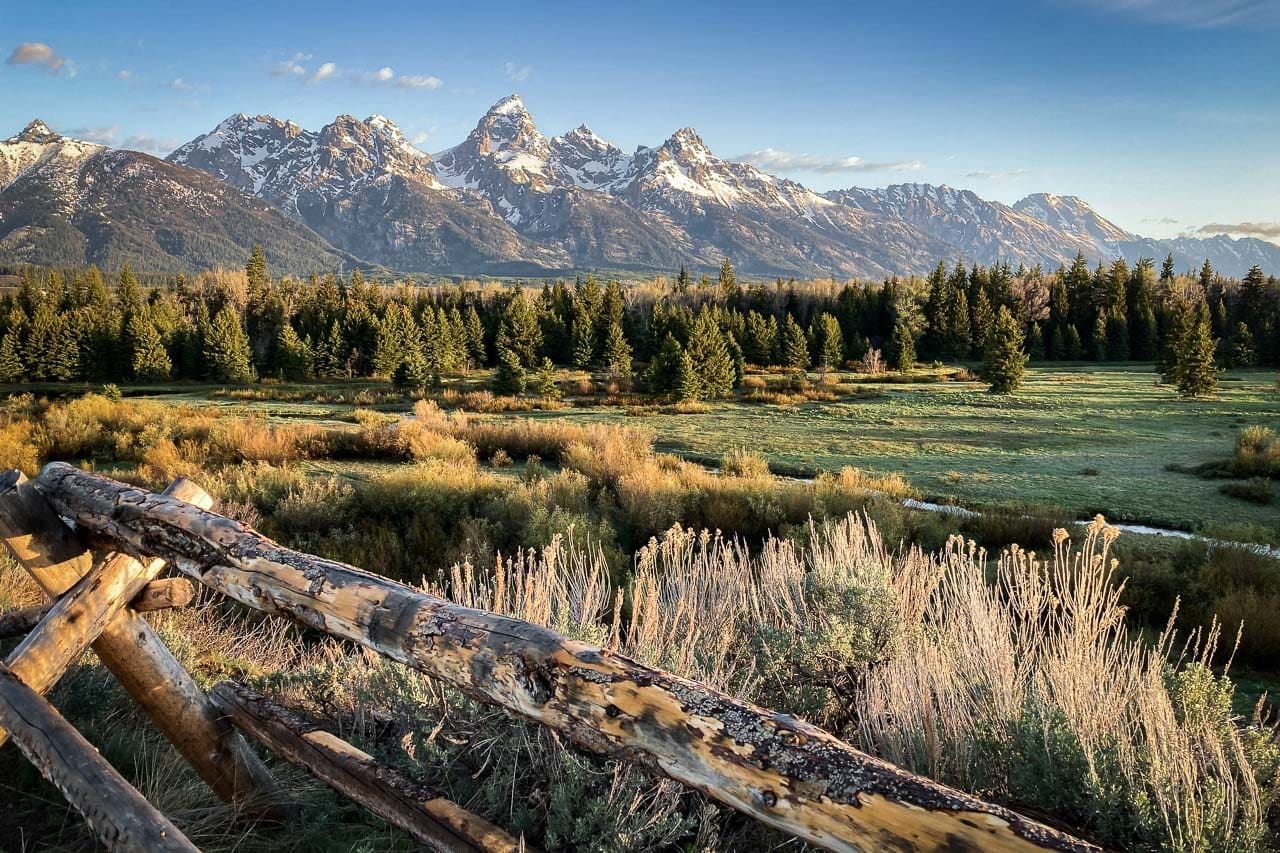
48. Several national parks are accessible only by plane or boat.
Although visiting national parks has been a popular American family road trip for many decades, some parks cannot be reached by car. Instead, you have to either fly or take a boat to get there. These parks are the following:
- Channel Islands National Park (California)
- Dry Tortugas National Park (Florida)
- Isle Royale National Park (Michigan)
- Gates of the Arctic National Park (Alaska)
- Glacier Bay National Park (Alaska)
- Katmai National Park (Alaska)
- Kobuk Valley National Park (Alaska)
- Lake Clark National Park (Alaska)
49. Protected in Grand Canyon National Park, the Grand Canyon is not the deepest canyon in the United States.
Although in terms of sheer size and dimensions, the Grand Canyon is without a doubt the largest canyon in America, it is not, in fact, the country’s deepest canyon.
That honor goes to Hells Canyon, located on the border of Idaho and Oregon. With a depth of 8,043 feet, Hells Canyon is the deepest canyon in all of North America. It is part of the Hells Canyon National Recreation Area, managed by the U.S. Forest Service.
For reference, the Grand Canyon is about 1 mile or 5,280 feet deep on average, with just over 6,000 feet deep at its deepest part.
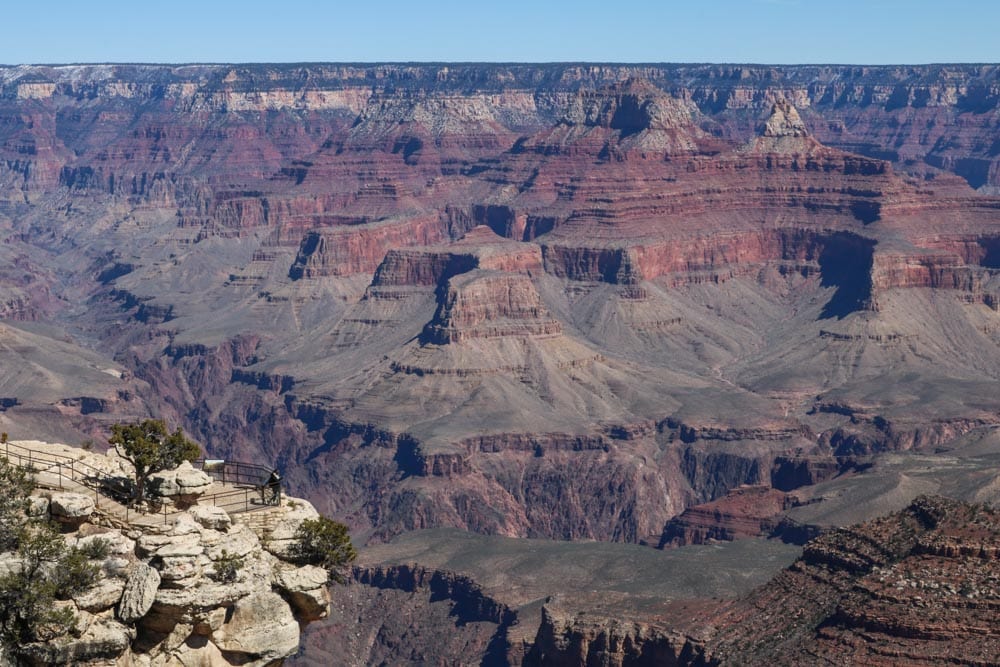
50. Dry Tortugas National Park in Florida is named for its abundance of sea turtles and lack of drinking water.
A tiny archipelago about 70 miles west of Key West in Florida, the Dry Tortugas occupy a strategic location in the Gulf of Mexico. In the 19th century, they were along the main shipping route between the Gulf of Mexico, the Atlantic Ocean, and the western Caribbean.
Spanish merchants used this shipping route frequently, sometimes stopping at the islands. They named them after the abundant sea turtles they saw—“tortugas” in Spanish.”
Later on, their name was changed on nautical maps, from Las Tortugas to Dry Tortugas, to indicate the absence of drinking water on the islands.
51. Theodore Roosevelt National Park in North Dakota is the only national park named after a U.S. President.
Sometimes called the “Conservationist President,” Theodore Roosevelt was one of the most influential people in the history of conservation in America.
An avid hunter and outdoorsman, Roosevelt spent his life enjoying, promoting, and protecting the American landscapes and wildlife.
During his time in the White House, he signed into law the groundbreaking Antiquities Act, which allows U.S. Presidents to singlehandedly create national monuments (many of which have been redesignated as national parks later on).
According to the Department of the Interior, Theodore Roosevelt used his presidential “authority to establish 150 national forests, 51 federal bird reserves, four national game preserves, five national parks and 18 national monuments on over 230 million acres of public land.”
Fittingly, the only U.S. national park named after a president is dedicated to Theodore Roosevelt. President Truman established the Theodore Roosevelt National Memorial Park in North Dakota on April 25, 1947.
The park is now known simply as Theodore Roosevelt National Park. It is home to Roosevelt’s own Elkhorn Ranch site, as well as verdant badlands, the Little Missouri River, and wildlife like bison, prairie dogs, and wild horses.
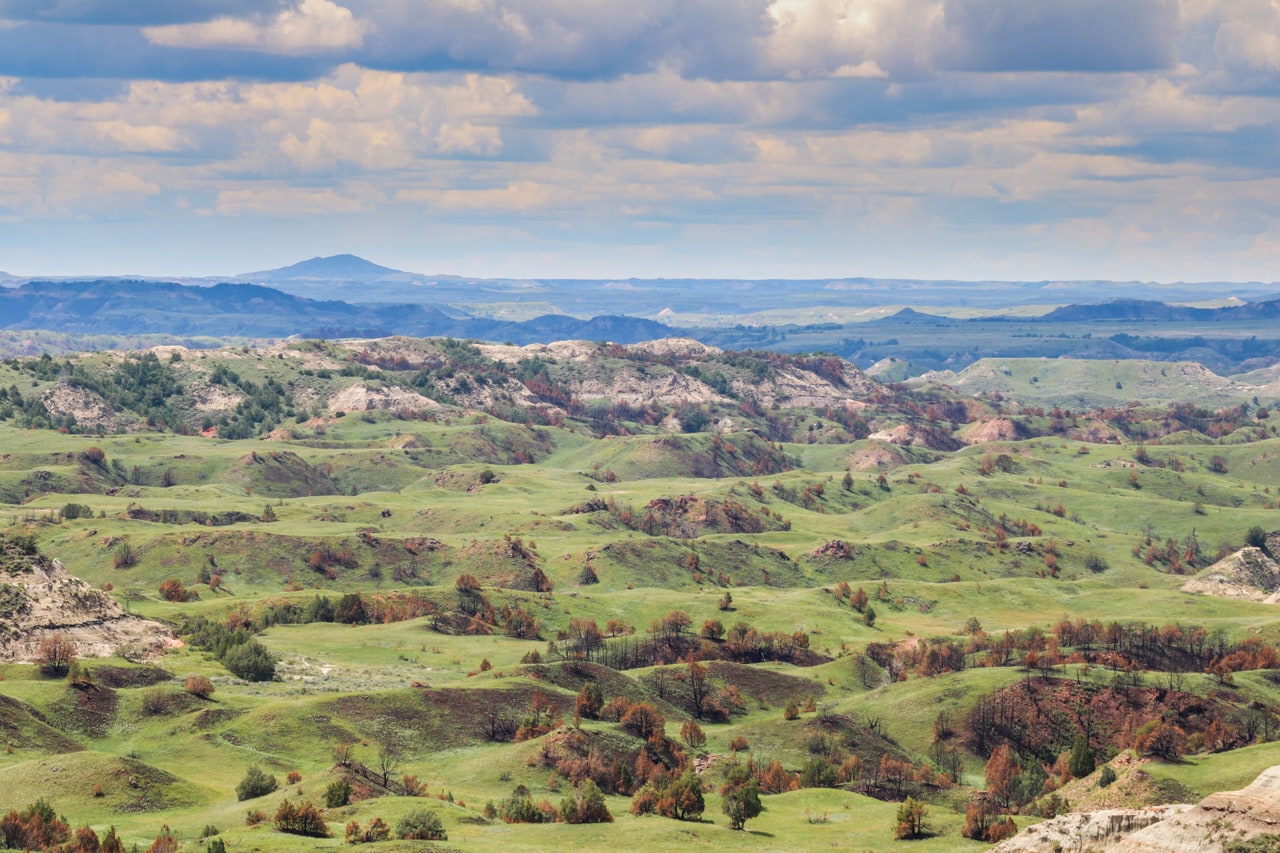
52. White Sands National Park in New Mexico encompasses the largest gypsum dune field on Earth.
“Rising from the heart of the Tularosa Basin is one of the world’s great natural wonders,” White Sands National Park says on its website. They’re talking, of course, about the “glistening white sands of New Mexico.”
This extraordinary national park is home to endlessly undulating dunes of gypsum, which can only exist in the absence of water. (Gypsum easily dissolves in water.)
These gypsum sand dunes cover 275 square miles of desert in southern New Mexico, effectively the largest gypsum dunefield on Planet Earth.
53. Paradise does exist! You can visit it in Mount Rainier National Park in Washington.
Yes, Paradise is a real place and it’s on the south slope of mighty Mount Rainier in Washington. It is about 5,400 feet above sea level, located more or less at the tree-line.
Paradise got its name after the daughter-in-law of James Longmire, Martha, exclaimed “Oh, what a paradise!” upon seeing the area’s wildflower meadows, streams, and mountain views sometime in the 1880s.
The name stuck and has been the official name of this part of Mount Rainier National Park since the park’s creation in 1899.
You can find the top things to see and do at Paradise in Mount Rainier National Park here.
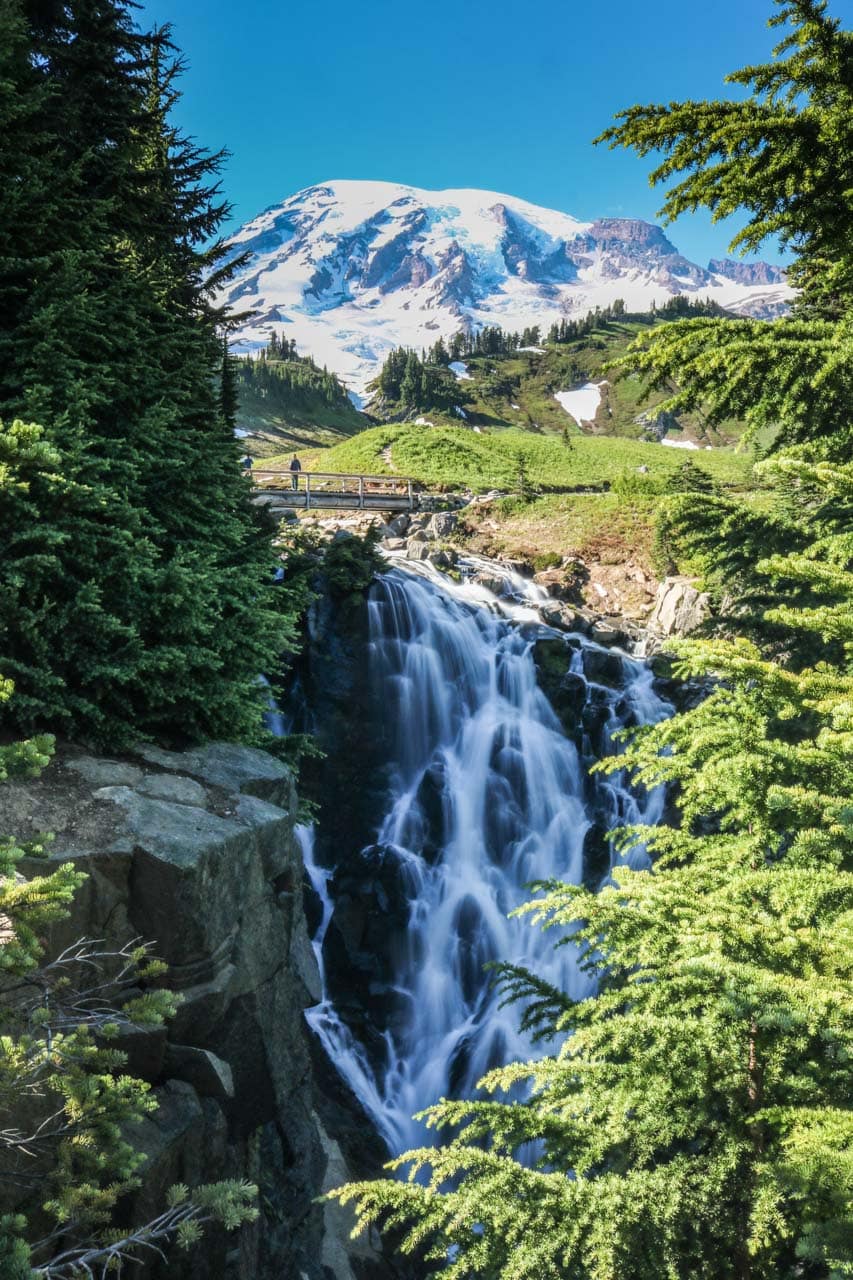
54. Fourteen U.S. national parks are also UNESCO World Heritage Sites.
Arguably the most universally accepted international conservation treaty in history, the World Heritage Convention is effectively “the American national park idea being carried out worldwide”, as the National Park Service puts it.
There are over 1,000 UNESCO World Heritage Sites across the world. These sites encompass cultural, historical, and/or natural features of international importance.
The United States currently has 24 World Heritage Sites, including no fewer than 14 national parks. They are the following:
- Carlsbad Caverns National Park (New Mexico)
- Everglades National Park (Florida)
- Glacier National Park (Montana)
- Glacier Bay National Park (Alaska)
- Grand Canyon National Park (Arizona)
- Great Smoky Mountains National Park (South Carolina and Tennessee)
- Hawaiʻi Volcanoes National Park (Hawaii)
- Mammoth Cave National Park (Kentucky)
- Mesa Verde National Park (Colorado)
- Olympic National Park (Washington)
- Redwood National and State Parks (California)
- Wrangell-St. Elias National Park (Alaska)
- Yellowstone National Park (Idaho, Montana and Wyoming)
- Yosemite National Park (California)
You can find more information about these UNESCO World Heritage national parks here.
55. The National Park Service logo showcases all important aspects of the National Park System.
One of the most familiar and popular U.S. government logos, the National Park Service Arrowhead includes all major aspects of the National Park System.
- The logo’s bison symbolizes all wildlife that lives in the national parks, while the sequoia tree and grassland represent all vegetation.
- The mountains stand for scenery, geological formations and outdoor recreation, such as hiking and camping.
- The lake represents water (quality) in the parks, as well as outdoor recreation, such as kayaking and fishing.
- Finally, the shape of the NPS logo itself—a stone arrowhead—represents the nation’s history, archaeology and culture.
You can read more about the history and meaning of the National Park Service logo here.
